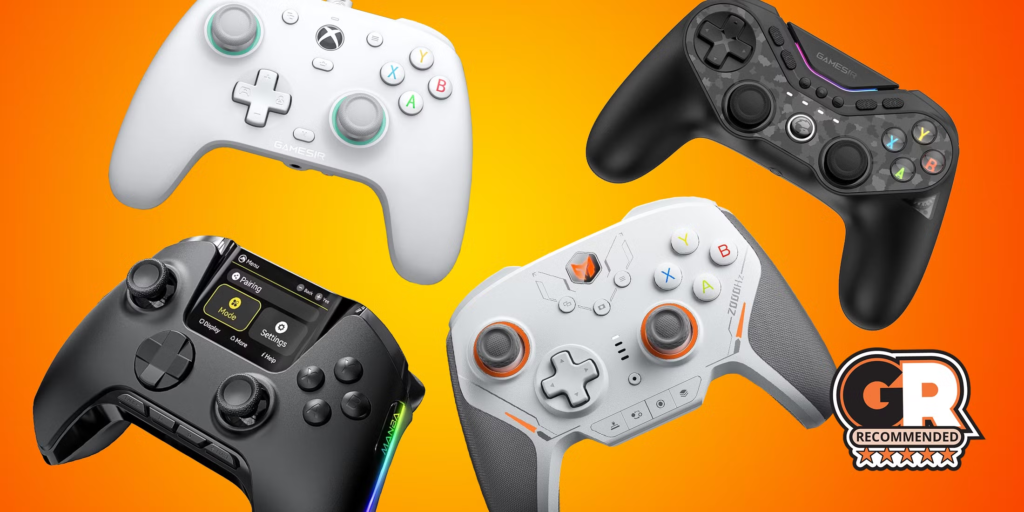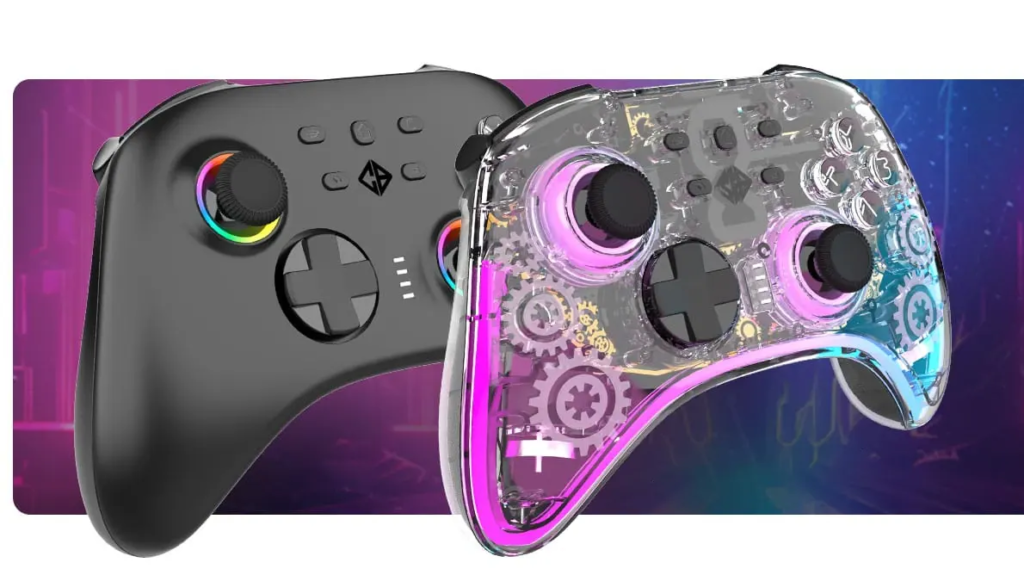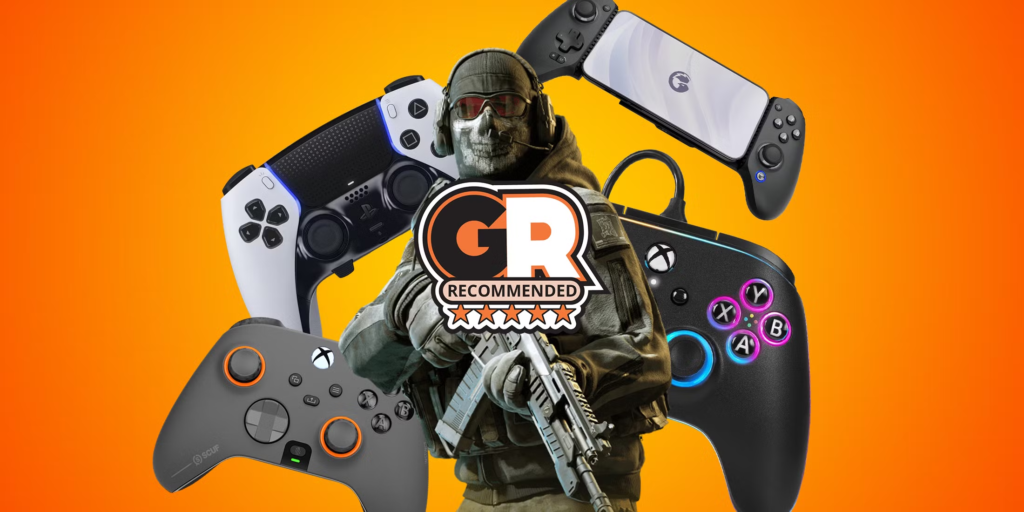In the fast-evolving world of gaming, precision is everything. Whether you’re a casual player dodging obstacles in a vibrant platformer or a professional esports athlete competing for a championship title, the tools you use can make or break your performance. Enter Hall effect joysticks—a cutting-edge technology that’s transforming how gamers and professionals interact with their controllers. Known for their accuracy, durability, and responsiveness, Hall effect joysticks are quickly becoming a game-changer in the industry. This article explores how this technology works, why it’s gaining popularity, and its impact on both gaming and professional applications.

What Are Hall Effect Joysticks?
At their core, Hall effect joysticks rely on a fascinating principle of physics called the Hall effect, discovered by physicist Edwin Hall in 1879. The technology uses magnetic fields to detect movement, eliminating the need for physical contact between components. Traditional joysticks, often found in older controllers, use potentiometers—mechanical parts that wear out over time due to friction. This wear can lead to issues like stick drift, where the joystick registers movement even when untouched, frustrating gamers during critical moments.
Hall effect joysticks, on the other hand, use magnets and sensors. When you move the joystick, the magnet shifts relative to a sensor, which detects changes in the magnetic field and translates them into precise digital signals. Since there’s no physical contact, these joysticks are far more durable and resistant to wear, offering a smoother, more reliable experience.

Why Gamers Love Hall Effect Joysticks
For gamers, precision is the name of the game. Whether you’re aiming at an opponent in a first-person shooter or navigating tight corners in a racing simulator, even the slightest inaccuracy can cost you. Hall effect joysticks address this by delivering unparalleled accuracy. The magnetic sensors provide smooth, consistent input, allowing for finer control over in-game movements. This is especially valuable in competitive gaming, where split-second decisions determine victory.
Another major advantage is their durability. Gamers often push their controllers to the limit, especially during intense sessions. Traditional joysticks can degrade, leading to unresponsive controls or the dreaded stick drift. Hall effect joysticks, with their contactless design, are built to last. This longevity not only saves gamers money on replacements but also ensures consistent performance over time.
The responsiveness of Hall effect joysticks also appeals to players. Because the sensors detect even the smallest movements, these joysticks offer a level of sensitivity that feels intuitive. Gamers can execute complex maneuvers with ease, whether it’s pulling off a tricky combo in a fighting game or steering through a chaotic battlefield.
A Growing Trend in Gaming Hardware
The rise of Hall effect joysticks reflects a broader trend in gaming hardware: the demand for high-quality, long-lasting equipment. As gaming becomes more mainstream, players are investing in premium peripherals to enhance their experience. Major controller manufacturers have taken notice, with some integrating Hall effect technology into their latest models.
For example, retro gaming enthusiasts have embraced Hall effect joysticks in modernized versions of classic arcade sticks. These updated designs combine nostalgic aesthetics with cutting-edge technology, appealing to players who want the best of both worlds. Similarly, high-end controllers marketed to competitive gamers now advertise Hall effect joysticks as a key selling point, emphasizing their precision and reliability.
The technology isn’t limited to niche or premium products, either. As production costs decrease, Hall effect joysticks are appearing in more affordable controllers, making their benefits accessible to a wider audience. This democratization of advanced technology is exciting for casual gamers who want professional-grade performance without breaking the bank.

Beyond Gaming: Professional Applications
While Hall effect joysticks are making waves in gaming, their applications extend far beyond entertainment. Professionals in fields like aviation, robotics, and medical technology are also adopting this technology for its precision and durability. In these industries, where accuracy can have critical consequences, Hall effect joysticks are proving indispensable.
In aviation, for instance, pilots use joysticks to control complex flight simulators or even real aircraft. The precision of Hall effect technology ensures that every movement is accurately translated, reducing the risk of errors during training or operations. Similarly, in robotics, engineers rely on these joysticks to manipulate robotic arms with pinpoint accuracy, whether assembling delicate components or performing remote surgeries.
Medical professionals are also benefiting. In surgical robotics, where precision is paramount, Hall effect joysticks allow surgeons to control instruments with incredible accuracy. The lack of mechanical wear ensures that these tools remain reliable during long, intricate procedures. This crossover into professional fields highlights the versatility of Hall effect technology and its potential to impact lives beyond gaming.
Challenges and Considerations
Despite their advantages, Hall effect joysticks aren’t without challenges. One hurdle is the initial cost. While prices are becoming more competitive, controllers with Hall effect joysticks are often pricier than their traditional counterparts. For budget-conscious gamers, this can be a barrier, though the long-term durability often justifies the investment.
Another consideration is compatibility. Not all games or platforms are optimized for the high sensitivity of Hall effect joysticks. In some cases, players may need to adjust settings or rely on software updates to fully harness the technology’s potential. However, as the technology becomes more widespread, developers are likely to address these issues, ensuring seamless integration.
Finally, some gamers may need time to adapt to the feel of Hall effect joysticks. The increased sensitivity can be a double-edged sword, requiring a learning curve for players accustomed to traditional controllers. With practice, though, most find the transition worthwhile, as the benefits far outweigh the initial adjustment period.
The Future of Hall Effect Joysticks
As gaming and technology continue to evolve, Hall effect joysticks are poised to play a central role. Their combination of precision, durability, and versatility makes them an ideal fit for the next generation of controllers. We can expect to see further innovations, such as improved sensor designs or integration with haptic feedback systems, enhancing the immersive experience.
In the professional world, advancements in Hall effect technology could lead to even more sophisticated applications. From autonomous vehicles to virtual reality training systems, the possibilities are endless. As industries recognize the value of reliable, precise controls, Hall effect joysticks are likely to become a standard feature in high-stakes environments.
For gamers, the future looks equally promising. As more manufacturers adopt this technology, competition will drive down costs and spur innovation. Customizable Hall effect joysticks, tailored to individual playstyles, could become a reality, giving players even greater control over their gaming experience.
Why It Matters
The rise of Hall effect joysticks is more than just a technical upgrade—it’s a testament to the growing importance of precision in our digital and physical worlds. For gamers, these joysticks offer a competitive edge, making every movement feel deliberate and impactful. For professionals, they provide the reliability needed to perform complex tasks with confidence.
This technology also reflects a broader shift toward quality and sustainability. By creating durable, long-lasting products, manufacturers# Hall Effect Joysticks: Revolutionizing Gaming Precision for Gamers and Professionals
In the fast-evolving world of gaming, precision is everything. Whether you’re a casual player dodging obstacles in a vibrant platformer or a professional esports athlete competing for a championship title, the tools you use can make or break your performance. Enter Hall effect joysticks—a cutting-edge technology that’s transforming how gamers and professionals interact with their controllers. Known for their accuracy, durability, and responsiveness, Hall effect joysticks are quickly becoming a game-changer in the industry. This article explores how this technology works, why it’s gaining popularity, and its impact on both gaming and professional applications.
What Are Hall Effect Joysticks?
At their core, Hall effect joysticks rely on a fascinating principle of physics called the Hall effect, discovered by physicist Edwin Hall in 1879. The technology uses magnetic fields to detect movement, eliminating the need for physical contact between components. Traditional joysticks, often found in older controllers, use potentiometers—mechanical parts that wear out over time due to friction. This wear can lead to issues like stick drift, where the joystick registers movement even when untouched, frustrating gamers during critical moments.
Hall effect joysticks, on the other hand, use magnets and sensors. When you move the joystick, the magnet shifts relative to a sensor, which detects changes in the magnetic field and translates them into precise digital signals. Since there’s no physical contact, these joysticks are far more durable and resistant to wear, offering a smoother, more reliable experience.
Why Gamers Love Hall Effect Joysticks
For gamers, precision is the name of the game. Whether you’re aiming at an opponent in a first-person shooter or navigating tight corners in a racing simulator, even the slightest inaccuracy can cost you. Hall effect joysticks address this by delivering unparalleled accuracy. The magnetic sensors provide smooth, consistent input, allowing for finer control over in-game movements. This is especially valuable in competitive gaming, where split-second decisions determine victory.
Another major advantage is their durability. Gamers often push their controllers to the limit, especially during intense sessions. Traditional joysticks can degrade, leading to unresponsive controls or the dreaded stick drift. Hall effect joysticks, with their contactless design, are built to last. This longevity not only saves gamers money on replacements but also ensures consistent performance over time.
The responsiveness of Hall effect joysticks also appeals to players. Because the sensors detect even the smallest movements, these joysticks offer a level of sensitivity that feels intuitive. Gamers can execute complex maneuvers with ease, whether it’s pulling off a tricky combo in a fighting game or steering through a chaotic battlefield.
A Growing Trend in Gaming Hardware
The rise of Hall effect joysticks reflects a broader trend in gaming hardware: the demand for high-quality, long-lasting equipment. As gaming becomes more mainstream, players are investing in premium peripherals to enhance their experience. Major controller manufacturers have taken notice, with some integrating Hall effect technology into their latest models.
For example, retro gaming enthusiasts have embraced Hall effect joysticks in modernized versions of classic arcade sticks. These updated designs combine nostalgic aesthetics with cutting-edge technology, appealing to players who want the best of both worlds. Similarly, high-end controllers marketed to competitive gamers now advertise Hall effect joysticks as a key selling point, emphasizing their precision and reliability.
The technology isn’t limited to niche or premium products, either. As production costs decrease, Hall effect joysticks are appearing in more affordable controllers, making their benefits accessible to a wider audience. This democratization of advanced technology is exciting for casual gamers who want professional-grade performance without breaking the bank.
Beyond Gaming: Professional Applications
While Hall effect joysticks are making waves in gaming, their applications extend far beyond entertainment. Professionals in fields like aviation, robotics, and medical technology are also adopting this technology for its precision and durability. In these industries, where accuracy can have critical consequences, Hall effect joysticks are proving indispensable.
In aviation, for instance, pilots use joysticks to control complex flight simulators or even real aircraft. The precision of Hall effect technology ensures that every movement is accurately translated, reducing the risk of errors during training or operations. Similarly, in robotics, engineers rely on these joysticks to manipulate robotic arms with pinpoint accuracy, whether assembling delicate components or performing remote surgeries.
Medical professionals are also benefiting. In surgical robotics, where precision is paramount, Hall effect joysticks allow surgeons to control instruments with incredible accuracy. The lack of mechanical wear ensures that these tools remain reliable during long, intricate procedures. This crossover into professional fields highlights the versatility of Hall effect technology and its potential to impact lives beyond gaming.
Challenges and Considerations
Despite their advantages, Hall effect joysticks aren’t without challenges. One hurdle is the initial cost. While prices are becoming more competitive, controllers with Hall effect joysticks are often pricier than their traditional counterparts. For budget-conscious gamers, this can be a barrier, though the long-term durability often justifies the investment.
Another consideration is compatibility. Not all games or platforms are optimized for the high sensitivity of Hall effect joysticks. In some cases, players may need to adjust settings or rely on software updates to fully harness the technology’s potential. However, as the technology becomes more widespread, developers are likely to address these issues, ensuring seamless integration.
Finally, some gamers may need time to adapt to the feel of Hall effect joysticks. The increased sensitivity can be a double-edged sword, requiring a learning curve for players accustomed to traditional controllers. With practice, though, most find the transition worthwhile, as the benefits far outweigh the initial adjustment period.
The Future of Hall Effect Joysticks
As gaming and technology continue to evolve, Hall effect joysticks are poised to play a central role. Their combination of precision, durability, and versatility makes them an ideal fit for the next generation of controllers. We can expect to see further innovations, such as improved sensor designs or integration with haptic feedback systems, enhancing the immersive experience.
In the professional world, advancements in Hall effect technology could lead to even more sophisticated applications. From autonomous vehicles to virtual reality training systems, the possibilities are endless. As industries recognize the value of reliable, precise controls, Hall effect joysticks are likely to become a standard feature in high-stakes environments.
For gamers, the future looks equally promising. As more manufacturers adopt this technology, competition will drive down costs and spur innovation. Customizable Hall effect joysticks, tailored to individual playstyles, could become a reality, giving players even greater control over their gaming experience.
Why It Matters
The rise of Hall effect joysticks is more than just a technical upgrade—it’s a testament to the growing importance of precision in our digital and physical worlds. For gamers, these joysticks offer a competitive edge, making every movement feel deliberate and impactful. For professionals, they provide the reliability needed to perform complex tasks with confidence.
This technology also reflects a broader shift toward quality and sustainability. By creating durable, long-lasting products, manufacturers are responding to consumer demand for equipment that stands the test of time. As Hall effect joysticks become more accessible, they’re empowering a new generation of gamers and professionals to push the boundaries of what’s possible.
In a world where precision matters, Hall effect joysticks are leading the charge. Whether you’re battling opponents in a virtual arena or controlling a robotic arm in a high-stakes operation, this technology is helping people achieve their best. As it continues to evolve, one thing is clear: Hall effect joysticks are here to stay, and their impact will only grow.
Must Read :- Jayden Daniels Shines as a Potential Star for 2028 Olympic Flag Football






